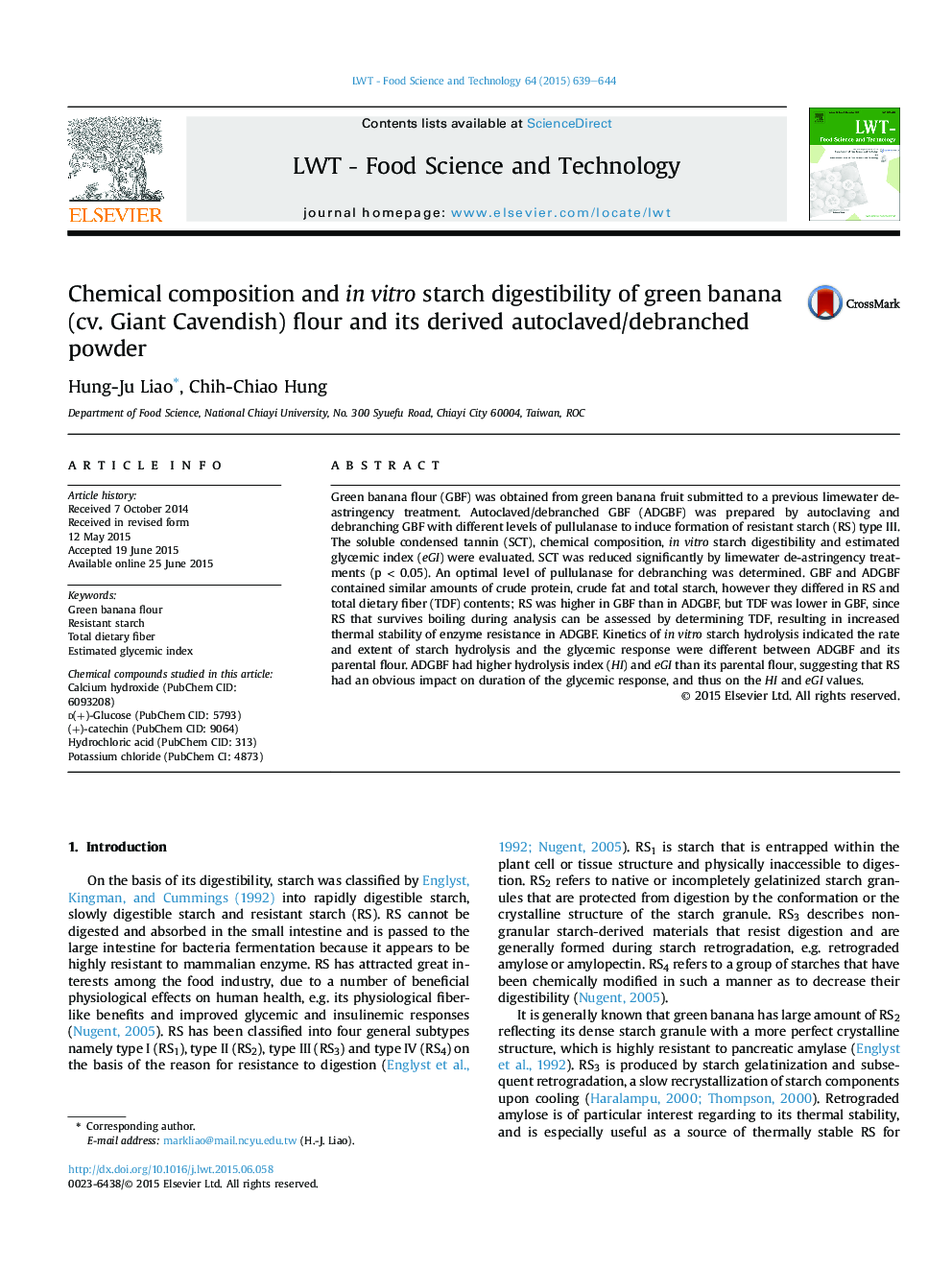| Article ID | Journal | Published Year | Pages | File Type |
|---|---|---|---|---|
| 6401735 | LWT - Food Science and Technology | 2015 | 6 Pages |
â¢Green banana flour was obtained by de-astringency treatment.â¢Resistant starch type 3 formed by autoclaving and debranching green banana flour.â¢Resistant starch had obvious impact on glycemic response.â¢Thermal stability of green banana flour was improved.â¢A promising food ingredient for functional foods was obtained.
Green banana flour (GBF) was obtained from green banana fruit submitted to a previous limewater de-astringency treatment. Autoclaved/debranched GBF (ADGBF) was prepared by autoclaving and debranching GBF with different levels of pullulanase to induce formation of resistant starch (RS) type III. The soluble condensed tannin (SCT), chemical composition, in vitro starch digestibility and estimated glycemic index (eGI) were evaluated. SCT was reduced significantly by limewater de-astringency treatments (p < 0.05). An optimal level of pullulanase for debranching was determined. GBF and ADGBF contained similar amounts of crude protein, crude fat and total starch, however they differed in RS and total dietary fiber (TDF) contents; RS was higher in GBF than in ADGBF, but TDF was lower in GBF, since RS that survives boiling during analysis can be assessed by determining TDF, resulting in increased thermal stability of enzyme resistance in ADGBF. Kinetics of in vitro starch hydrolysis indicated the rate and extent of starch hydrolysis and the glycemic response were different between ADGBF and its parental flour. ADGBF had higher hydrolysis index (HI) and eGI than its parental flour, suggesting that RS had an obvious impact on duration of the glycemic response, and thus on the HI and eGI values.
